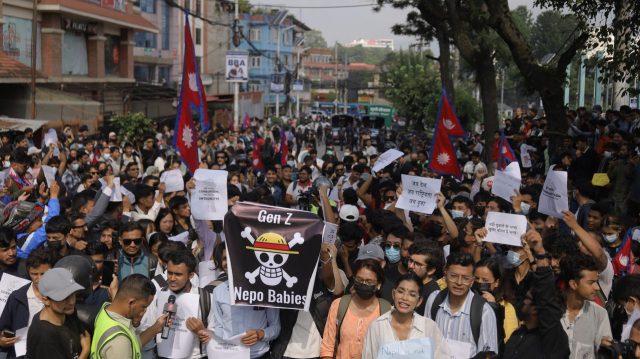
Protests over political corruption and an ongoing effort to regulate social media have plunged Nepal into a state of civic unrest. Led predominantly by younger organizers and activists, demonstrations emerged as Nepal’s government banned (and then returned) access to popular platforms like WhatsApp, Facebook and YouTube for failing to register their products under a new national law. At least 19 people were killed and dozens more injured amid protests in the Nepali capital of Kathmandu on Monday. More than simply a matter of access to apps, the Nepali protests have become a generational conflict over the region’s future.
‘Robust space for debate’ faces ‘censorship’
Prime Minister K.P. Sharma Oli resigned on Tuesday in an unsuccessful effort to quell the disquiet. His critics accused his government of “trying to curtail freedom of expression” in a nation where free speech is “highly prized,” said The New York Times. Nepal generally offers “robust space for debate,” while similar freedoms have “shrunk” in neighboring countries. The government’s social media regulatory effort, requiring that companies “appoint a liaison office or point in the country,” has been “widely criticized as a tool for censorship and punishing government opponents who voice their protests online,” The Associated Press said. Rights groups have similarly accused the Nepali government of working to “curb freedom of expression and violate fundamental rights” with this legislation.
The government has claimed it is not “banning social media” but trying to “bring them in line with Nepali law,” said the BBC. That explanation has not been enough for many Nepalese, who “heeded a call by demonstrators describing themselves as Generation Z” to gather at the parliamentary building in Kathmandu on Monday. There, authorities used force including “water cannons, batons and firing rubber bullets,” resulting in the day’s double-digit fatalities, said the network.
“At the core” of the protesters’ demands “lies a call for the rule of law, where fairness, accountability, and justice prevail over favoritism and corruption,” said Yog Raj Lamichhane, an assistant professor at Nepal’s Pokhara University, to Al Jazeera.
Dissatisfaction over ‘disbelief in authority’
Experts have warned the Nepali government that Monday’s violent clashes were an “outburst of accumulated frustrations of youths caused by corruption, bad governance, abuse of power, and the arrogance of the successive governments and political parties,” said The Kathmandu Post. The protests are “fueled by the frustration of youth and their disbelief in authority, as they feel sidelined from decision-making,” said Lamichhane.
But while the social media ban may have “added fuel to the unrest,” said Lamichhane, the broader grievances “extend far deeper” and are “rooted in longstanding neglect and the silencing of youth voices” in Nepal. The protests may be stunning in their size and scale, but the sentiments fueling the demonstrations are “far from sudden,” said The Hindustan Times. Most recently, that anger manifested in Nepal’s trending “Nepo Kids” hashtag on social media, which featured “children of politicians photographed enjoying luxurious lifestyles — to expose alleged nepotism and corruption.” Given Nepal’s “lively democracy and active civic space,” said United Nations Human Rights office spokesperson Ravina Shamdasani, “dialogue is the best means to address young people’s concerns.”
A crackdown on digital platforms has pushed younger Nepalis into increasingly violent clashes with government forces






